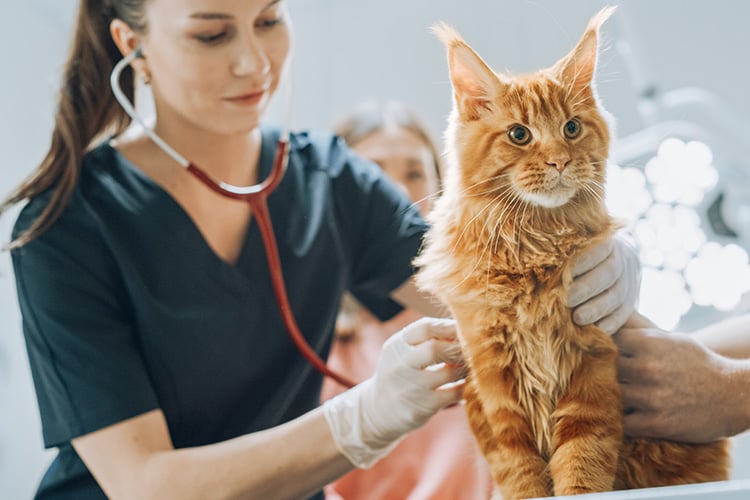
10 Steps to Successfully Open Your Veterinary Clinic
Opening a veterinary clinic is an exciting yet challenging endeavor. From securing funding to marketing your new practice, there are many moving parts to consider. In this post, we’ll break down the 10 essential steps to successfully open your veterinary clinic and set it up for long-term success.
1. Create a Business Plan
Before you dive into the logistics, start with a detailed business plan. This plan will serve as your roadmap and help you stay on track. Your business plan should cover:
- Mission and vision: What is the purpose of your clinic? What are your long-term goals?
- Target market: Who are your ideal clients (e.g., pet owners, specific breeds, etc.)?
- Services offered: What treatments and services will your clinic provide?
- Financial projections: Estimate your costs, expected revenue, and potential profits.
A solid business plan will not only guide your decisions but also help you secure financing if needed.
2. Secure Financing
Starting a veterinary clinic can require a significant amount of capital, especially when factoring in equipment, leasing, and staffing. Depending on your financial situation, consider the following options for funding:
- Small business loans: A traditional route for securing funds.
- SBA loans: A government-backed option with favorable terms for new businesses.
- Investors or partners: If you have partners, you might raise funds through private investors.
Be sure to have a well-prepared business plan when applying for loans or seeking investors.
3. Choose the Right Location
The location of your veterinary clinic plays a critical role in your success. Consider these factors when selecting your space:
- Accessibility: Ensure the clinic is easy to find and accessible by car or public transportation.
- Visibility: High foot traffic or close proximity to pet stores or animal shelters can attract new clients.
- Competition: Research nearby veterinary clinics to understand the local market and ensure there’s enough demand.
Once you’ve found the right location, sign the lease and prepare for any necessary renovations.
4. Obtain Licenses and Permits
Running a veterinary clinic requires several licenses and permits to operate legally. These may include:
- Veterinary license: Ensure that you and your team are licensed to practice.
- Business license: This is required by most local governments to operate legally.
- Health permits: Depending on your area, you may need specific health and safety permits.
- OSHA regulations: Follow workplace safety guidelines, especially if your clinic deals with hazardous materials.
Be sure to check with your local government and veterinary associations to ensure you’re fully compliant with all regulations.
5. Purchase Equipment and Supplies
Investing in the right equipment and supplies is essential to providing quality care to your clients. Some basic equipment you’ll need includes:
- Examination tables
- Surgical tools
- Diagnostic equipment (e.g., X-ray machines, ultrasound, etc.)
- Pharmaceuticals and vaccines
- Pet care supplies (e.g., collars, leashes, food, etc.)
Research suppliers and manufacturers to find the best deals while ensuring quality and reliability.
6. Hire Qualified Staff
Your clinic’s success will depend on having a skilled and dedicated team. Hire staff that not only share your passion for animal care but also have the right expertise. Key hires include:
- Veterinarians: Skilled professionals who can diagnose, treat, and care for animals.
- Veterinary technicians: Assist in medical procedures, care, and administration of medication.
- Receptionists and office staff: Manage appointments, patient records, and client communications.
Offer competitive salaries and benefits to attract top talent, and foster a positive work culture.
7. Design Your Clinic’s Layout
The layout of your clinic should be designed with both efficiency and comfort in mind. Key considerations include:
- Waiting area: Ensure it’s spacious and comfortable for clients and their pets.
- Treatment rooms: Have separate rooms for consultations, surgeries, and diagnostics to maintain hygiene and efficiency.
- Staff areas: Create workspaces that allow your staff to collaborate and stay organized.
- Pet care: Provide safe, clean spaces for animals to wait or recover.
A well-organized layout helps with workflow and ensures a pleasant experience for both clients and pets.
8. Market Your Clinic
Before opening your doors, start marketing your clinic to create buzz and attract clients. Effective marketing strategies include:
- Build a website: Make sure it’s informative, easy to navigate, and optimized for search engines.
- Social media: Start posting on platforms like Facebook and Instagram to engage with the community.
- Grand opening event: Host an event to introduce your clinic to potential clients and offer special promotions.
- Local advertising: Advertise in local newspapers, magazines, or on local radio stations to reach your target audience.
Make your clinic visible from the start to attract your first clients.
9. Set Up Financial and Administrative Systems
Keeping track of your finances and managing administrative tasks is essential for running a smooth operation. Set up systems for:
- Accounting: Use accounting software or hire an accountant to track expenses, revenue, and taxes.
- Client management: Implement a veterinary practice management software to handle appointments, billing, and medical records.
- Insurance: Make sure your clinic has the proper insurance coverage, including liability, malpractice, and property insurance.
Having these systems in place from day one will save you time and help you stay organized.
10. Prepare for Opening Day
Finally, make sure you’re ready for the big day! Double-check that all equipment is in place, staff are trained, and your clinic is clean and welcoming. Here’s what to do on opening day:
- Welcome clients: Greet clients with a smile and offer them an experience they’ll want to repeat.
- Provide excellent service: Deliver high-quality care for both pets and their owners to create loyal clients.
- Promote your opening: Continue advertising and offering special deals to encourage new clients to book appointments.
Your clinic’s first day sets the tone for its future, so ensure everything runs smoothly!
Conclusion
Opening a veterinary clinic involves careful planning, dedication, and a clear understanding of the steps required to set up your business. By following these 10 steps, you’ll be well on your way to creating a successful veterinary practice that provides excellent care for pets and builds strong relationships with your clients. Whether you’re just starting or well into your journey, remember to stay focused and adapt as needed to overcome any challenges that arise.



